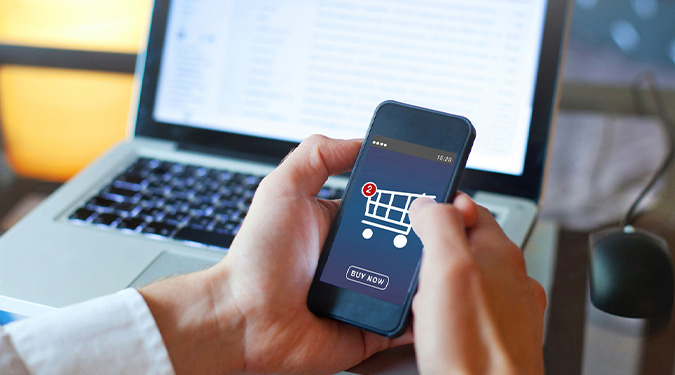Table of Contents

In 2020, the U.S. B2B eCommerce market was valued at $6.64 trillion. It is expected to grow by 18.7% per year over the next five years, according to Grand View Research. As companies embrace B2B eCommerce or omnichannel selling, suppliers are experiencing rising demand for B2B eCommerce and eProcurement integration from their customers.
Buyers seeking to leverage their eProcurement system for integrated procurement workflows increasingly expect suppliers to support integration-powered automation features such as PunchOut catalogs, purchase order automation, and eInvoicing.
However, although some customers seek integration, others are less proactive. Your customers may not realize the benefits of B2B eCommerce integration or the integration capabilities that you have. In fact, they may have little understanding of how B2B eCommerce integration enables Punchout catalogs and other valuable procurement automation features.
Once a supplier has laid the technical groundwork for friction-free B2B eCommerce integration with the help of TradeCentric, a proactive marketing campaign educates buyers so they can take advantage of eCommerce integration and procurement automation.
Increasing buyer awareness of your integration capabilities can help your company to:
-
Win new business: The ability to offer low-friction integration and procurement automation differentiates you from your competitors and makes your business more attractive to customers who manage procurement via their eProcurement or ERP system.
-
Retain current customers: Current customers who have implemented an eProcurement system require existing vendors to integrate. Once integrated, customers are motivated to extend existing contracts.
-
Increase Sales Volume: Ease of ordering and visibility typically leads to increased order volume and frequency from existing customers. The supplier may also see increases in account sales from new departments due to greater visibility within the customers eProcurement system.
5 Effective Strategies for Promoting B2B eCommerce Integration Capabilities
1. Educate and Motivate Your Sales Team
The sales team is the primary point of contact between your organization and its buyers. In our experience, sales teams are by far the best source of new integration opportunities. It’s essential they understand the benefits of B2B eCommerce integration and are motivated to promote integration capabilities to buyers.
Consider giving sales professionals integration-focused training and providing sales enablement content to summarize integration benefits, timelines, and responses to common questions.
Additionally, sales enablement content and training provides sales reps with valuable talking points when reaching out to the finance and procurement teams within their customer base, who are generally the final gatekeepers in any contract negotiations. Suppliers may also want to consider designating a sales specialist to support sales reps in these discussions.
2. Start With Your Existing Customers
Promoting B2B eCommerce integration helps suppliers win new business, but it can also help retain current buyers and increase sales volumes. The promotional strategy should be tailored to each buyer’s circumstances, whether that’s:
-
Buyers who have no existing integration.
-
Buyers with a custom Punchout integration you would like to move to a more flexible solution.
-
Buyers with an integration based on older technologies, such as static/CIF catalogs or Electronic Document Interchange (EDI).
3. Contact Prospective Buyer Procurement Managers
Reach out to procurement managers and CPOs employed by your customers and marketing leads. They may not be aware of your business’ eCommerce integration capabilities or how procurement integration streamlines purchasing and reduces costs. This is an effective strategy for winning new business, particularly if the customer wants to take advantage of their eProcurement platform’s integration features, but doesn’t know your capabilities to do so as a supplier.
Contacting procurement managers directly conveys that your business is proactive about procurement digitization, setting it apart from suppliers who are merely reactive or even resistant to offering integration and procurement automation.
4. Create Promotional Web Copy
Use your B2B eCommerce store to publicize eCommerce integration capabilities. Buyers visiting the eCommerce store to place orders are prime targets for integration.
There are several ways a B2B supplier might leverage their store, including:
-
Banners on category pages, product pages, and the cart page.
-
Blog articles, including guest articles from successfully integrated buyers.
-
Integration case studies and success stories.
The goal is to ensure potential buyers who visit your store are exposed to information about a more efficient alternative for managing authentication, ordering, procurement document exchange, and invoicing.
5. Get the Word Out About Your B2B eCommerce Integration Capabilities
Finally, promote integration capabilities as widely as possible. Ensure that when a potential buyer encounters your brand, they are also made aware that Punchout catalogs, purchase order automation, eInvoicing, and other procurement automation features are an advantage of buying from you.
Potential promotional channels include:
-
Paid advertising,
-
Email marketing,
-
Social media marketing,
-
Conference talks and promotional events,
-
Podcasts and videos.
Why Promoting B2B eCommerce Integration Matters
Buyers embrace B2B eCommerce integration for several reasons:
-
A streamlined product selection and ordering process.
-
The elimination of manual data entry and order rekeying.
-
Centralized procurement management with procurement data transparency.
-
The reduction of rogue spending as suppliers are brought under active management.
-
Increased procurement transparency.
These benefits are why suppliers receive buyer requests for integration and why an increasing number of buyers won’t do business with suppliers incapable of B2B integration.
However, integration benefits don’t accrue only to buyers. The benefits of B2B eCommerce integration for suppliers is a key theme of the PunchOut2Go blog. We’ve written about why suppliers need to provide PunchOut catalog functionality, how eProcurement integration helps suppliers to build sticky buyer relationships, and how B2B eCommerce can drive your company’s growth strategy.
Historically, B2B eCommerce integration was expensive and technically challenging. To support buyers on multiple eProcurement platforms, suppliers had to build a custom integration for each buyer and manage the infrastructure to host it. Given the difficulty, suppliers were reluctant to offer Punchout catalogs and purchase order automation widely, restricting it to their largest buyers. For these suppliers, it didn’t make sense to proactively promote integration capabilities to a broad customer base.
In contrast, the TradeCentric iPaaS (Integration Platform as a Service) eliminates the technical complexity and expense of integrating buyer eProcurement platforms with supplier eCommerce platforms. Once a B2B store is integrated with the iPaaS, the supplier can enable procurement automation features for any number of buyers without building custom integration solutions.
Partnering with TradeCentric eliminates the downsides of integration, freeing suppliers to offer PunchOut catalogs, purchase order invoicing, and eInvoicing to any interested customer. To learn more about the TradeCentric iPaaS, contact a B2B eCommerce integration specialist by completing the form below.




